Lightweight Safety Shoes: Footwear For Construction And Manufacturing.
Lightweight safety shoes are game-changers for people working long hours in construction and manufacturing. These shoes offer a blend of safety features and comfort, reducing fatigue and improving productivity on the job.
Traditional safety footwear can be bulky and heavy, often leading to discomfort and potential fatigue after a hard day’s work. Lightweight models, on the other hand, provide essential protection while being easier on your feet, enhancing mobility and reducing strain.
A big plus of opting for lightweight safety shoes includes a lighter load on your joints, which is crucial in environments where you’re on your feet all day. Keeping your feet comfortable can greatly impact overall job performance, helping prevent injuries caused by tired feet and reduced alertness.
The core safety features, such as steel or composite toe caps, slip-resistant soles, and puncture-resistant arches, are present in lightweight and traditional shoes. However, lightweight designs use advanced and ergonomic materials to deliver these features without the extra heft.
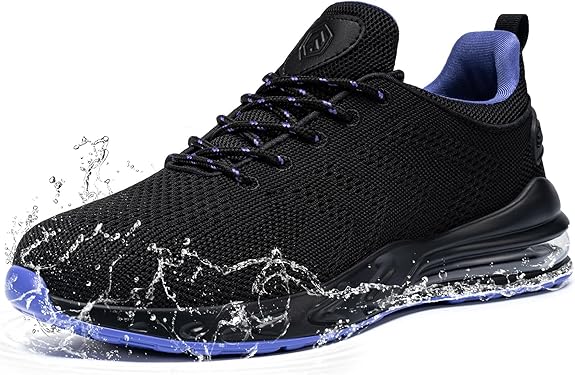 Slip Resistant Womens Slip On Shoes Work Non Slip Sneakers
Slip Resistant Womens Slip On Shoes Work Non Slip Sneakers
Choosing lightweight safety shoes means not compromising between safety and comfort, offering peace of mind when you’re working hard. It’s all about getting the right fit and style to match your work needs, keeping you safe and effective.
Top Styles of Safety Shoes for Construction and Manufacturing
Picking the right safety shoe style means knowing what works best for your work environment. Factors like terrain, job tasks, and potential hazards play a major role in construction and manufacturing.

One top contender in footwear style is the classic lace-up boot. It offers excellent ankle support and can handle rough terrains in construction zones. Yet, manufacturers now blend tradition with light materials, making them a go-to for modern work needs.
Another style to consider is slip-on shoes, which offer convenience without sacrificing safety. They are easy to put on and take off, and slip-ons are perfect for manufacturing environments where you frequently transition between tasks.
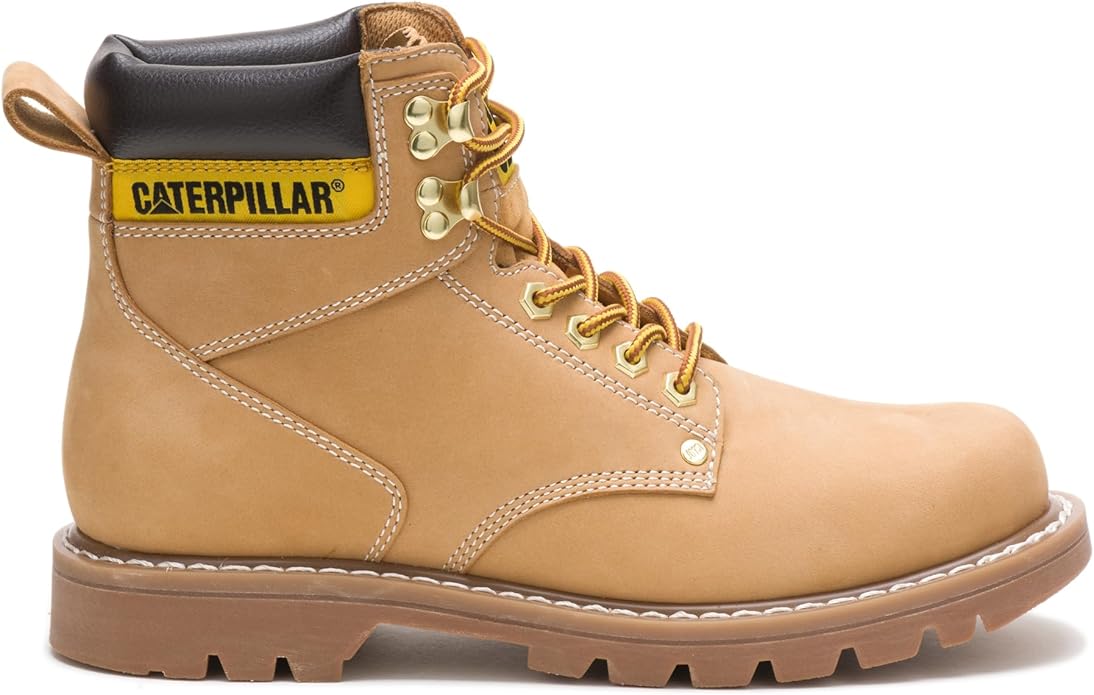 Cat Footwear Men’s Second Shift Steel Toe Work Boot
Cat Footwear Men’s Second Shift Steel Toe Work Boot
A non-slip sole is an essential feature across styles, crucial for preventing accidents on slick surfaces. Brands have put a lot of emphasis on developing soles that maintain grip without adding unnecessary weight.
Popular brands like Timberland, Caterpillar, and Reebok make waves with designs that marry safety and style. Look for models with reinforced toes and flexible upper materials to suit varied work conditions.
Choosing the best style involves a balance—prioritize what’s truly needed for safety and consider how the shoe feels throughout the day. It’s not just about protection; comfort influences how well you do your job.
Ensuring Safety: Non-Slip Shoes and Proper Footwear Accessories
Slipping on the job is a serious concern, especially in environments like manufacturing floors or construction sites, where unexpected spills or slick surfaces can catch you off guard. Non-slip footwear is a must-have to stay steady and safe. Modern shoe designs include advanced grip technologies tailored to hold firm on diverse surfaces. Making sure your shoes have the right non-slip features might just keep you upright and injury-free each shift.
Socks might seem like a minor detail, but they play a big role in comfort and safety. Opt for moisture-wicking socks that keep your feet dry, reducing the risk of blisters or fungal infections. Wool blends or high-performance synthetic fibers are solid bets—they manage sweat like a pro while supplying a cushioned fit.
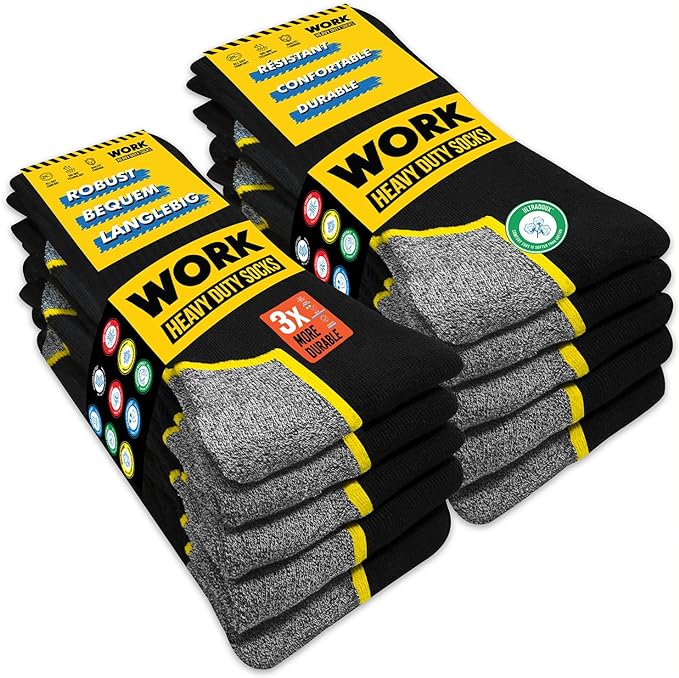 WORK Socks for Men Crew Length
WORK Socks for Men Crew Length
Handling your safety shoes carefully ensures their features last as long as possible. It’s wise to clean off dirt and debris after each workday and let your shoes air out to prevent odors and material breakdown. Also, inspect them regularly for any signs of wear and replace them promptly if they lose their grip or structural integrity.
There’s also a list of dos and don’ts that can guide you in maintaining your footwear. Avoid using harsh chemicals for cleaning or engaging in activities that could compress or damage the safety features, like steel toe caps. Treat your shoes with the respect they deserve; they’re your first line of defense regarding workplace safety.
Maximizing the Lifespan of Your Safety Shoes
Your safety shoes are more than just another piece of gear; they invest in your health and safety. Keeping them in top-notch condition ultimately saves money and ensures they perform when needed most.
Start with regular cleaning. Dust and grime can wear down materials over time. Using a soft brush with a mild soap solution works wonders. For tougher stains, a damp cloth usually does the trick without damaging the shoes.
Storing your safety shoes right is just as important as cleaning them. Keep them in a dry, well-ventilated area away from direct sunlight and heat sources. An old shoe tree can help maintain its shape and prevent unwanted creases.
Replace insoles as they wear down, ensuring they continue to offer comfort and support. Fresh insoles can make older shoes feel new and keep your feet happy through long shifts.
Knowing when it’s time to say goodbye to your trusty shoes isn’t easy. Significantly worn heels or compromised safety features are clear signs that it’s time for new ones. Regular checks ensure you’re not caught off guard by faulty footwear.
When disposing of old safety shoes, consider recycling options if available. Many manufacturers offer programs for recycling used footwear, helping reduce environmental waste and supporting sustainability initiatives.
+ There are no comments
Add yoursLightweight Safety Shoes: Footwear For Construction And Manufacturing.
Lightweight safety shoes are game-changers for people working long hours in construction and manufacturing. These shoes offer a blend of safety features and comfort, reducing fatigue and improving productivity on the job.
Traditional safety footwear can be bulky and heavy, often leading to discomfort and potential fatigue after a hard day’s work. Lightweight models, on the other hand, provide essential protection while being easier on your feet, enhancing mobility and reducing strain.
A big plus of opting for lightweight safety shoes includes a lighter load on your joints, which is crucial in environments where you’re on your feet all day. Keeping your feet comfortable can greatly impact overall job performance, helping prevent injuries caused by tired feet and reduced alertness.
The core safety features, such as steel or composite toe caps, slip-resistant soles, and puncture-resistant arches, are present in lightweight and traditional shoes. However, lightweight designs use advanced and ergonomic materials to deliver these features without the extra heft.
 Slip Resistant Womens Slip On Shoes Work Non Slip Sneakers
Slip Resistant Womens Slip On Shoes Work Non Slip Sneakers
Choosing lightweight safety shoes means not compromising between safety and comfort, offering peace of mind when you’re working hard. It’s all about getting the right fit and style to match your work needs, keeping you safe and effective.
Top Styles of Safety Shoes for Construction and Manufacturing
Picking the right safety shoe style means knowing what works best for your work environment. Factors like terrain, job tasks, and potential hazards play a major role in construction and manufacturing.

One top contender in footwear style is the classic lace-up boot. It offers excellent ankle support and can handle rough terrains in construction zones. Yet, manufacturers now blend tradition with light materials, making them a go-to for modern work needs.
Another style to consider is slip-on shoes, which offer convenience without sacrificing safety. They are easy to put on and take off, and slip-ons are perfect for manufacturing environments where you frequently transition between tasks.
 Cat Footwear Men’s Second Shift Steel Toe Work Boot
Cat Footwear Men’s Second Shift Steel Toe Work Boot
A non-slip sole is an essential feature across styles, crucial for preventing accidents on slick surfaces. Brands have put a lot of emphasis on developing soles that maintain grip without adding unnecessary weight.
Popular brands like Timberland, Caterpillar, and Reebok make waves with designs that marry safety and style. Look for models with reinforced toes and flexible upper materials to suit varied work conditions.
Choosing the best style involves a balance—prioritize what’s truly needed for safety and consider how the shoe feels throughout the day. It’s not just about protection; comfort influences how well you do your job.
Ensuring Safety: Non-Slip Shoes and Proper Footwear Accessories
Slipping on the job is a serious concern, especially in environments like manufacturing floors or construction sites, where unexpected spills or slick surfaces can catch you off guard. Non-slip footwear is a must-have to stay steady and safe. Modern shoe designs include advanced grip technologies tailored to hold firm on diverse surfaces. Making sure your shoes have the right non-slip features might just keep you upright and injury-free each shift.
Socks might seem like a minor detail, but they play a big role in comfort and safety. Opt for moisture-wicking socks that keep your feet dry, reducing the risk of blisters or fungal infections. Wool blends or high-performance synthetic fibers are solid bets—they manage sweat like a pro while supplying a cushioned fit.
 WORK Socks for Men Crew Length
WORK Socks for Men Crew Length
Handling your safety shoes carefully ensures their features last as long as possible. It’s wise to clean off dirt and debris after each workday and let your shoes air out to prevent odors and material breakdown. Also, inspect them regularly for any signs of wear and replace them promptly if they lose their grip or structural integrity.
There’s also a list of dos and don’ts that can guide you in maintaining your footwear. Avoid using harsh chemicals for cleaning or engaging in activities that could compress or damage the safety features, like steel toe caps. Treat your shoes with the respect they deserve; they’re your first line of defense regarding workplace safety.
Maximizing the Lifespan of Your Safety Shoes
Your safety shoes are more than just another piece of gear; they invest in your health and safety. Keeping them in top-notch condition ultimately saves money and ensures they perform when needed most.
Start with regular cleaning. Dust and grime can wear down materials over time. Using a soft brush with a mild soap solution works wonders. For tougher stains, a damp cloth usually does the trick without damaging the shoes.
Storing your safety shoes right is just as important as cleaning them. Keep them in a dry, well-ventilated area away from direct sunlight and heat sources. An old shoe tree can help maintain its shape and prevent unwanted creases.
Replace insoles as they wear down, ensuring they continue to offer comfort and support. Fresh insoles can make older shoes feel new and keep your feet happy through long shifts.
Knowing when it’s time to say goodbye to your trusty shoes isn’t easy. Significantly worn heels or compromised safety features are clear signs that it’s time for new ones. Regular checks ensure you’re not caught off guard by faulty footwear.
When disposing of old safety shoes, consider recycling options if available. Many manufacturers offer programs for recycling used footwear, helping reduce environmental waste and supporting sustainability initiatives.
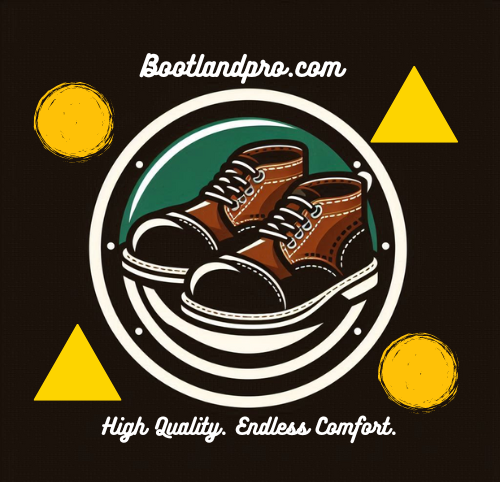
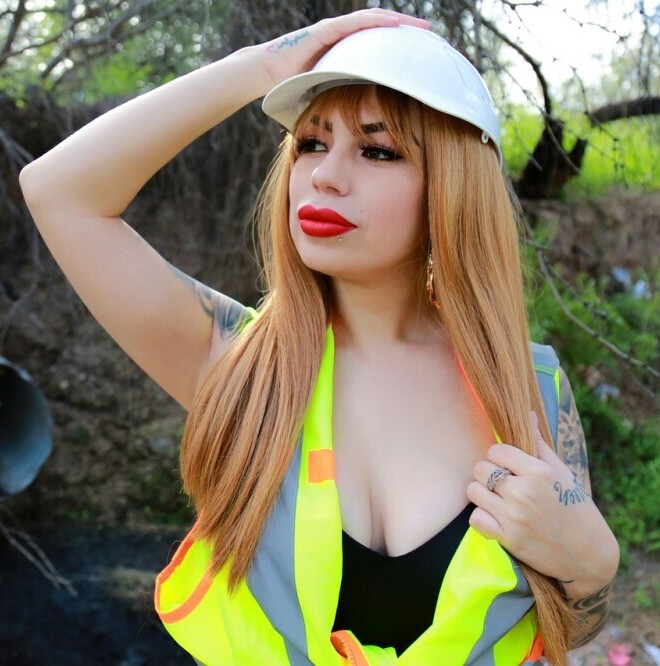

This article on lightweight safety shoes is really helpful! It’s great to see how these shoes can make a big difference for people working in construction and manufacturing. My husband wears them for manufacturing, and he needs to look for hypoallergenic options since his skin can react to certain materials. I also like the tips on keeping the shoes clean and knowing when to replace them. Plus, non-slip soles are so important for safety. Overall, this is a good reminder to choose the right footwear for staying safe and comfortable at work!
Lightweight safety shoes are a game-changer for anyone working in construction or manufacturing. They offer the perfect balance of comfort and protection, making long hours on your feet a bit more bearable. It’s amazing how much a lighter shoe can impact your overall job performance and reduce the risk of injuries.
I love that there are so many stylish options available now. Gone are the days of clunky, uncomfortable boots. You can find lightweight shoes that are both safe and fashionable.
Of course, safety should always be the top priority. It’s essential to choose shoes with the right features, like steel toe caps and slip-resistant soles. And don’t forget about the importance of proper maintenance. By taking care of your safety shoes, you can extend their life and ensure they continue to protect you.
This article is very important because having the right shoes in construction and manufacturing business is very important. it’s a matter of safety, security, and protection. I knew some people who had Timberland shoes because they are very resistant; but I didn’t know that Reebok had such shoes. Anyway, thank you for introducing such a crucial issue that will help people working in these industries!